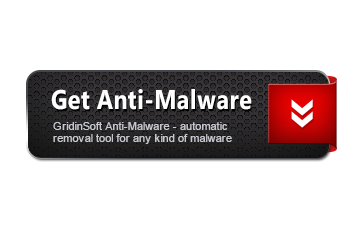The Trojan.Win32.SelfDel.htik is considered dangerous by lots of security experts. When this infection is active, you may notice unwanted processes in Task Manager list. In this case, it is adviced to scan your computer with GridinSoft Anti-Malware.

Gridinsoft Anti-Malware
Removing PC viruses manually may take hours and may damage your PC in the process. We recommend using GridinSoft Anti-Malware for virus removal. Allows to complete scan and cure your PC during the trial period.
What Trojan.Win32.SelfDel.htik virus can do?
- Behavioural detection: Executable code extraction – unpacking
- SetUnhandledExceptionFilter detected (possible anti-debug)
- Yara rule detections observed from a process memory dump/dropped files/CAPE
- Presents an Authenticode digital signature
- Creates RWX memory
- Anomalous file deletion behavior detected (10+)
- Dynamic (imported) function loading detected
- Performs HTTP requests potentially not found in PCAP.
- Enumerates running processes
- A process created a hidden window
- CAPE extracted potentially suspicious content
- The binary contains an unknown PE section name indicative of packing
- The binary likely contains encrypted or compressed data.
- Uses Windows utilities for basic functionality
- Deletes its original binary from disk
- Collects and encrypts information about the computer likely to send to C2 server
- Collects information about installed applications
- Checks the system manufacturer, likely for anti-virtualization
- Attempts to modify proxy settings
- Uses suspicious command line tools or Windows utilities
How to determine Trojan.Win32.SelfDel.htik?
File Info:
name: 2723A3FAC18D8AB56258.mlwpath: /opt/CAPEv2/storage/binaries/008a2d4d1551973a6e783bb95ae985a57c5ba5f3a84eea1dff169dee80fc5d14crc32: C49F0603md5: 2723a3fac18d8ab562588ec03b829342sha1: d049ff0c1086a910430a197c1962edb7594b1d84sha256: 008a2d4d1551973a6e783bb95ae985a57c5ba5f3a84eea1dff169dee80fc5d14sha512: c767834d2f7d01aaf0b0cdf637e1d32cf6cc096751023d5b6fe1e75036f6d37ab010624cd9d0035220e87b2443d75b2c7489e7acf756da2b48b87a41c394d2b3ssdeep: 98304:HC2BOZH15fgnbELWRuJGnp7krFx7X3URnGPeD:HKZV5fWZuJeS7UJGitype: PE32 executable (GUI) Intel 80386, for MS Windowstlsh: T1940633C2F8193108CA41EC711B387A639DCA6ED7EC4C892F5B1429F72E45935F21B5ABsha3_384: 5f967a54bf146fb4c047670c3a2392aa6ed2332320553d494893f5048ff13bd0c6d955a74daa1cbc4c2350df1a57deffep_bytes: 6801608300e801000000c3c34a41e5a7timestamp: 2019-03-07 12:56:04Version Info:
FileDescription: OneUpdater.Software - WAHID TECH LIMITED 2019FileVersion: 2.4.12.1LegalCopyright: (copy) 2019 WAHID TECH LIMITEDLegalTrademarks: OneUpdater.Software - WAHID TECH LIMITED 2019OriginalFilename: Installer.exeProductName: OneUpdater.SoftwareTranslation: 0x0000 0x04e4
Trojan.Win32.SelfDel.htik also known as:
| Elastic | malicious (high confidence) |
| MicroWorld-eScan | Trojan.GenericKD.38131842 |
| FireEye | Generic.mg.2723a3fac18d8ab5 |
| ALYac | Trojan.GenericKD.38131842 |
| Alibaba | Trojan:Win32/SelfDel.2f9fbe91 |
| Symantec | ML.Attribute.HighConfidence |
| APEX | Malicious |
| Paloalto | generic.ml |
| Kaspersky | Trojan.Win32.SelfDel.htik |
| BitDefender | Trojan.GenericKD.38131842 |
| Avast | Win32:Evo-gen [Susp] |
| Ad-Aware | Trojan.GenericKD.38131842 |
| Emsisoft | Trojan.GenericKD.38131842 (B) |
| F-Secure | Heuristic.HEUR/AGEN.1244948 |
| DrWeb | Trojan.Siggen8.12423 |
| Zillya | Trojan.SelfDel.Win32.65581 |
| McAfee-GW-Edition | Artemis |
| Sophos | Generic ML PUA (PUA) |
| GData | Trojan.GenericKD.38131842 |
| Webroot | W32.SelfDel.htik |
| Avira | HEUR/AGEN.1244948 |
| Microsoft | Trojan:Win32/Wacatac.B!ml |
| Cynet | Malicious (score: 99) |
| McAfee | Artemis!2723A3FAC18D |
| MAX | malware (ai score=81) |
| VBA32 | BScope.Trojan.Bsymem |
| Malwarebytes | Trojan.Agent |
| Rising | Trojan.SelfDel!8.275 (CLOUD) |
| Ikarus | Trojan.Win32.Generic |
| Fortinet | W32/SelfDel.HTIK!tr |
| AVG | Win32:Evo-gen [Susp] |
| CrowdStrike | win/grayware_confidence_60% (W) |
How to remove Trojan.Win32.SelfDel.htik?
- Download and install GridinSoft Anti-Malware.
- Open GridinSoft Anti-Malware and perform a “Standard scan“.
- “Move to quarantine” all items.
- Open “Tools” tab – Press “Reset Browser Settings“.
- Select proper browser and options – Click “Reset”.
- Restart your computer.



Leave a Comment